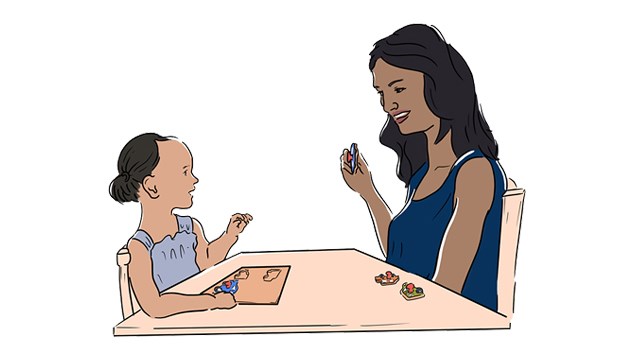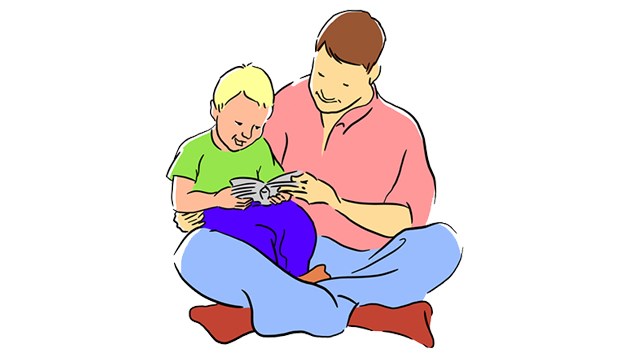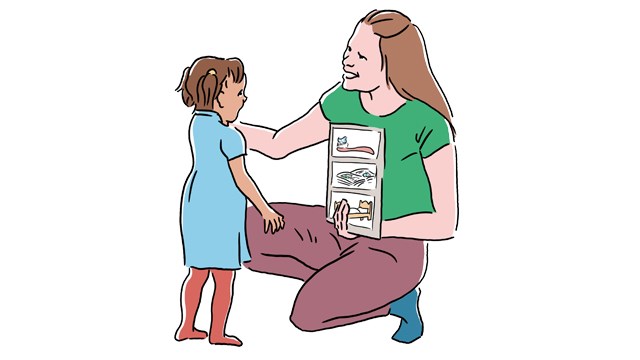Den här webbplatsen använder cookies, som samlar information om hur du interagerar med sidan. I kombination med de uppgifter du uppger, skapar vi en profil så att vi ska kunna visa relevant innehåll just för dig. Genom att acceptera tillåter du att vi samlar och behandlar dina personuppgifter enligt beskrivningen.
Get started communicating

Why is it important to get started?
Before children learn to speak, they use eye contact, gestures, noises and facial expressions to express their needs, wishes and interests. This is known as “non-verbal communication” or “early communication”.
Early communication is a precondition for the child continuing to learn to speak and to develop other important skills. When a child has learned to point, he/she can learn new words by having an adult say the name of the thing the child is pointing at. The child can also indicate that something is wrong at an early stage, making it easier for adults to deal with the child’s frustration. It is therefore important to help your child start communicating even before he/she has started speaking.
How can I help my child?
All communication is learned through interaction with other people. Children can learn new words and gestures from a video, but it is during periods of joint attention that they learn to use them to communicate. Joint attention involves the child focusing consciously on something in the company of someone else.
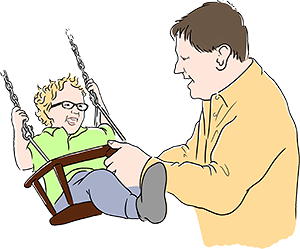
If you establish joint attention when your child is playing on the swings, your child can learn to ask you to push him/her faster by looking at you or saying “more”. Your child can also learn to share joy with you when you look at each other and laugh together. To help your child develop communication skills, it is essential to have many periods of joint attention and interaction. There are several strategies you can use to achieve this:
Communication triangle
In order to achieve joint attention, it is important to make it easy for the child to look at you and at what you are playing with or watching.
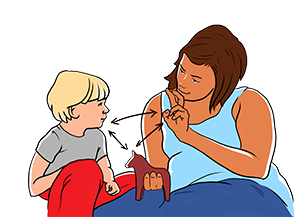
To do this, position your child, whatever you are focusing on and yourself in a triangle. This creates what is known as a “communication triangle” and makes it possible to achieve joint attention.
Pick up on and respond to the child’s communication
During times of joint attention, the adult must pick up on and respond to the child’s communication. This is called using a responsive communication style
- Look at and listen to what your child is doing and saying, and what he/she appears interested in – and comment on it.
- Wait and expect your child to respond. You will often have to wait a while for young children to respond. Your child may respond by pointing, making noises, looking up, making gestures or trying to say words.
- Interpret and confirm everything your child does as communication. You can confirm by imitating your child or expanding on what he/she has said or done. For example, if you are playing on the swings and your child says “more”, confirm and expand on what he/she has said by saying “yes, you want to go faster!” and then pushing the swing a little faster.
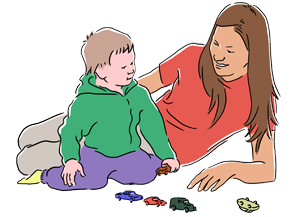
When communication runs smoothly, adults do it unconsciously. If a child is slow in learning to communicate, adults often respond by communicating less and less with the child. If this is the case, you need to make a conscious effort to use a responsive communication style to help your child start communicating.
Picture-based material
Young children find it difficult to talk about things that are not happening here and now. They do not know enough words to take part in conversations, and they can find it hard to understand what we are talking about. By using pictures, you can achieve periods of joint attention about things that are not actually happening here and now.
A simple way to start using picture-based material is to collect photos and videos on your smartphone or iPad. You can then look at the pictures together and talk about what you have done. Most children like looking at themselves and things they recognize. This encourages child to communicate.
Talk about the playground
You can also use pictures to talk about things that are going to happen. By showing your child pictures and talking about what is going to happen, you help your child get ready for it – and when he/she is aware of what is going to happen, it is more likely to be a success. It can also be a good idea to print certain photos. For example, if you hang photos of important people around the home, your child can use the pictures to ask questions or talk about the person.
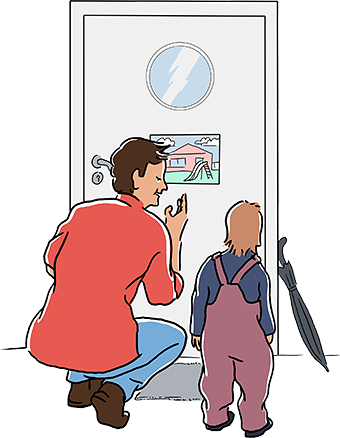
Signs as AAC
Children learn naturally to communicate by using gestures before they learn to talk. Young children find it easier to understand what we are saying if we use a lot of gestures and facial expressions. One way to support your child’s communication development is therefore to use signs from sign language at the same time as you are talking to him/her. This is known as “Signs as augmentative and alternative communication”.
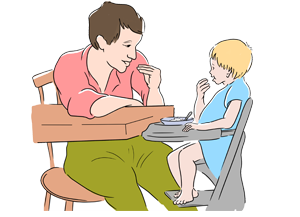
When an adult uses signs, it is easier for the child to focus on the adult. Signs also help the child to understand the meanings of different words. When adults use signs, children learn important signs themselves, which they can then use until they have learned to say the associated words.
Here is an online course for you if you would like to learn to use signs as augmentative and alternative communication.
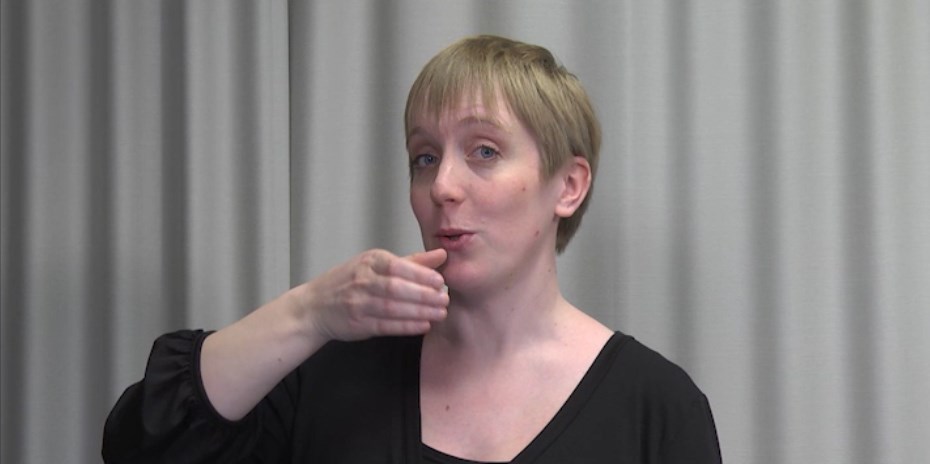
A online course in AAC - by the Habilitation Centre in Uppsala.
Create occasions for communication
To help your child develop communication skills, you need to create many occasions for interaction and joint attention every day.
Create occasions for communication
Here is a collection of our most helpful tips for creating lots of occasions for communication in your everyday life.
- Talk about and describe in words what you and your child do in your daily lives – for example, when you change a diaper, wash your hands or walk home from kindergarten.
- Read books together every day. Click here to read about how to get started with reading together. Link to book reading page.
- Talk with your child about things that have happened or are going to happen. Use photos or videos while you chat to make it easier for your child to join in the conversation.
- Play games with your child Choose activities and games your child enjoys. Plan the games so that both you and the child have clear roles, and that the child needs to communicate with you during the game.
- Involve your child in your daily routines. If you let your child help lay the table, clear away his/her toys, empty the dishwasher, or load the washing machine, these are all excellent occasions for practicing communication.
- Adapt situations so that your child needs to communicate with you more. If you feed your child fruit in small portions, this gives him/her the chance to ask for “more” more often. You can also place your child’s toys visibly on a shelf so your child has to practice asking you to take them down when he/she wants to play with them.
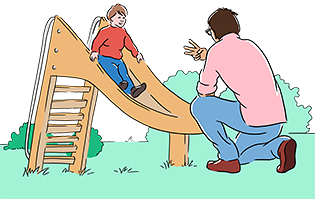
Printable summary of the page
Contact
This page has been created by the Health and Rehabilitation Division of Uppsala County. The information is intended for everyone looking for hints about how to encourage children to engage in play and communication.
To contact the person responsible for the content on the page, send an email to: habiliteringen@regionuppsala.se
